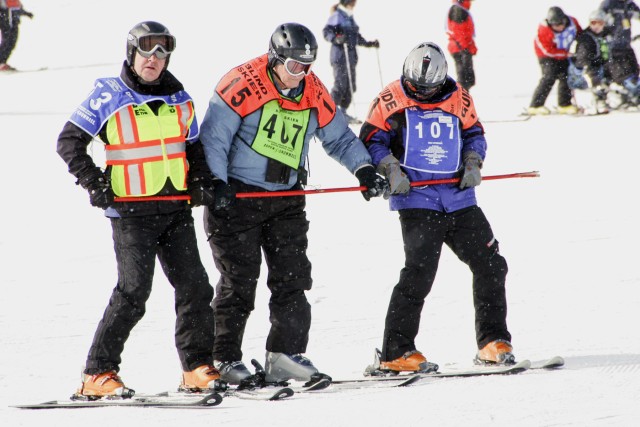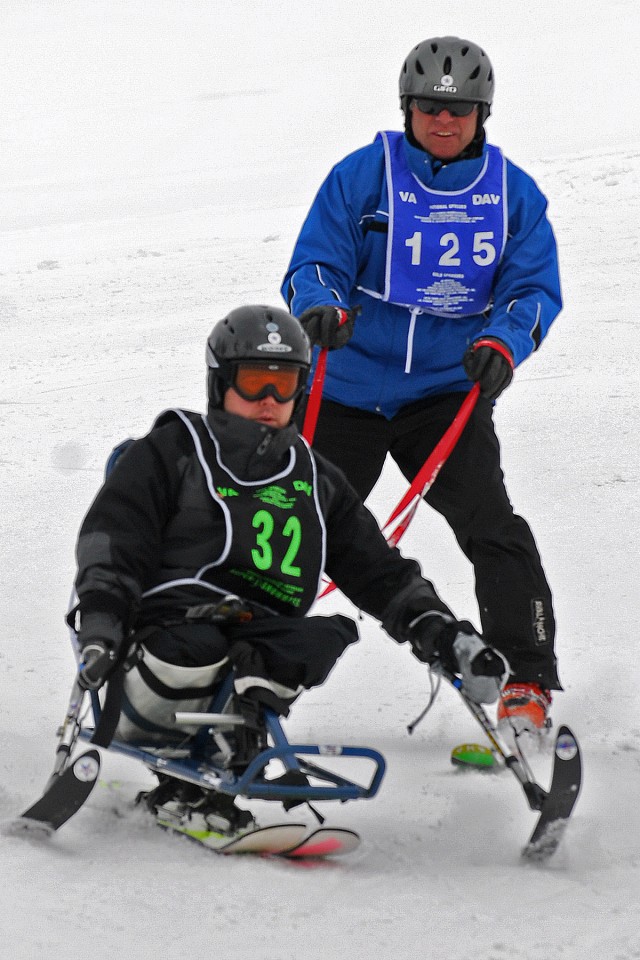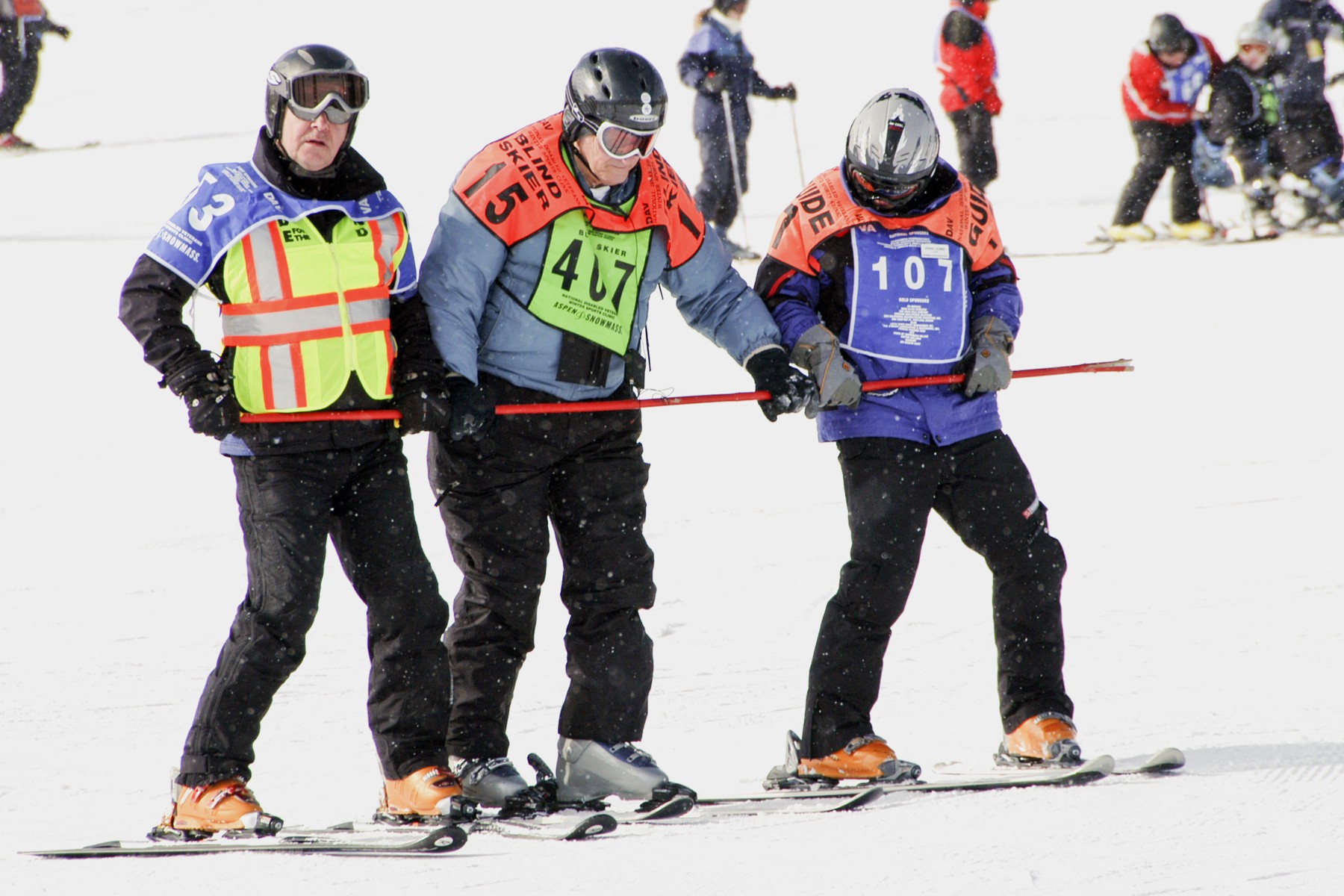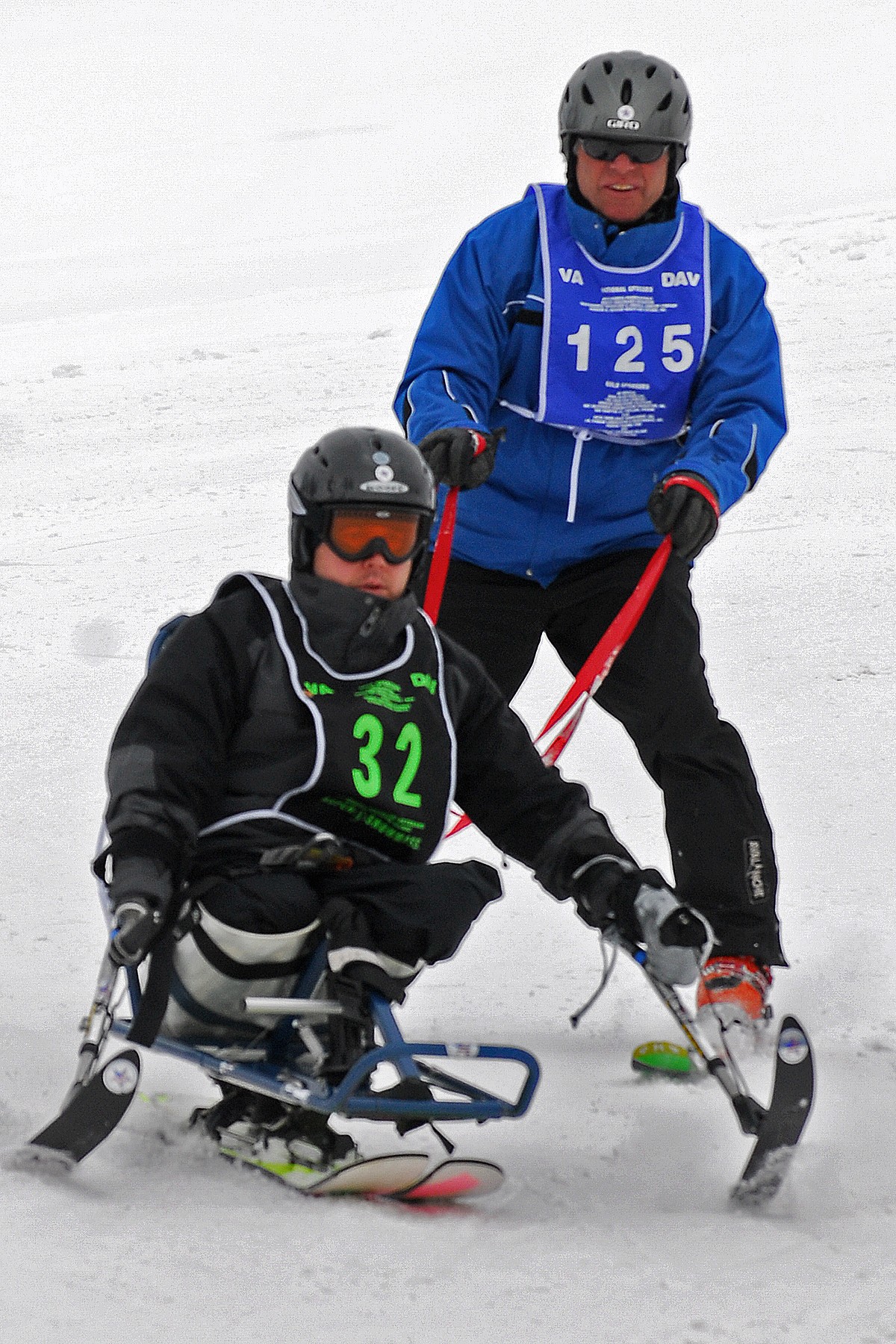ARMY veteran Javier Torres recently traveled from the warmth of Puerto Rico to a snowy mountain in Colorado for some major life-changing experiences. Aca,!A"My eyes have been opened to discovering that there is a whole new world to experience out there,Aca,!A? he said.
Torres participated in the 23rd National Disabled Veterans Winter Sports Clinic, a world leader in promoting rehabilitation to injured veterans. At the event, held March 29 to April 3, in Snowmass Village, Colo., 370 participants with disabilities received instruction in adaptive Alpine and Nordic skiing. They were also introduced to a number of other adaptive recreational activities and sports. For many newly injured veterans, including those injured in Iraq and Afghanistan, the clinic provided not only their first experience in winter sports, but also an inspiration to take their rehabilitation to a higher level.
While serving with the infantry in Afghanistan in 2005, Torres received three gunshot wounds during an ambush on his convoy. Though one would never guess the extent of his injuries from his positive attitude, his wounds resulted in severe nerve damage in one leg, no control over an ankle, sensitivity issues (similar to an electric current) through portions of his body and constant pain. During his rehabilitation, a physical therapist at Walter Reed Army Medical Center told Torres, 25, about the annual clinic. It sounded like a great idea, Torres said, and he followed up on the suggestion. He was one of 116 first-time participants at this yearAca,!a,,cs event.
Although he was hesitant initially, TorresAca,!a,,c mountainside experience has given him a newfound love of snowboarding. Driving a snowmobile, trying archery and shooting skeet were some other exciting firsts for this Operation Enduring Freedom veteran who never held a gun before joining the Army.
Aca,!A"During the clinic registration I even saw a friend I had gone through a great deal of rehab with, but we had lost contact. The camaraderie all week was great, and it was like a reunion with others who have done what we have done,Aca,!A? said Torres, a Trujillo Alto, Puerto Rico native. Aca,!A"At the clinic, I even swam in a heated outdoor pool during a blizzard and made a snow angel in my swimsuit. Thanks to this opportunity to try some new things, I canAca,!a,,ct wait for my baby girl to snowboard and do sports with her daddy. The clinic gives veterans like myself the opportunity to accomplish something new. You can do anything if you really want to.Aca,!A?
The Department of Veterans Affairs and the Disabled American Veterans sponsor the clinic each year, with financial assistance from corporate sponsors and individual donors. Participation is open to U.S. military service veterans with traumatic brain injuries, spinal cord injuries, orthopedic amputations, visual impairments, certain neurological problems and other disabilities. Veterans who receive health care at a VA medical facility have first priority to participate. In addition, a number of active military personnel from Operation Enduring Freedom and Operation Iraqi Freedom also attended.
More than 200 certified ski instructors for the disabled, as well as several current and former members of the U.S. Disabled Ski Team, serve as ski instructors to meet the unique needs of the participants. This year, the clinic received additional support from more than 450 volunteers. For the third year, a race training and development program helped veterans develop their skiing abilities to an elite level, with an ultimate goal of qualifying for the U.S. Paralympic Ski Team.
The Army was well represented at the 2009 winter sports clinic, with 179 participants (including both veterans and active-duty servicemembers). Sixteen of the 29 female participants were Army veterans. The ages of the participants ranged from the youngest, Byron Henson, 22, of Tuscaloosa, Ala., to the oldest, Horace Aca,!A"JimAca,!A? Baugh, 87, of Idaho Falls, Idaho. Both were first-time participants and Army veterans. Aca,!A"The last time I skied I was 17 or 18 years old,Aca,!A? said Baugh, who is visually impaired. Aca,!A"IAca,!a,,cm 87 now, so itAca,!a,,cs been a while!Aca,!A? Baugh added that he had looked forward Aca,!A"with great enthusiasm to enjoying the winter sports and meeting other veterans. ItAca,!a,,cs important to stay busy and active in everything we can learn to do and not let our disabilities interfere with a good life.Aca,!A?
Activities included adaptive Alpine (downhill) and Nordic (cross-country) skiing using mono-skis, bi-skis, and other adaptive equipment; as well as instruction in adaptive skiing and snowboarding for stand-up skiers including the visually impaired. Alternate activities included scuba diving, sled hockey, snowshoeing, snowmobiling, goal ball, rock climbing, shooting sports, curling, fly fishing, snow cat/gondola rides, and a trip to nearby hot springs; plus educational and instructional workshops in self-defense, creative writing and other stimulating topics.
Joey Bozik, 30, of Fuquay Varina, N.C., is an Army veteran who attended the clinic for the fourth time this year. In October 2004, while serving in Iraq as a military police officer with the 82nd Airborne Division, he was severly injured by an improvised explosive device. Today, Bozik is a husband and the new father of a baby girl, and is busy finishing his degree in business communication. He is also a triple amputee, losing both legs above the knee and his right arm below the elbow. The prosthetic devices he uses include a power wheelchair at home, a manual chair when traveling, and a body-powered arm. He also uses two powered C-Legs that have computer chips in the knees, which read his gait and then propel his legs for him. When there is pressure on the ball of his foot, the knee releases.
Aca,!A"Be the best person you can be every day,Aca,!A? said Bozik. Aca,!A"The winter sports clinic is always great, the people are fantastic and you go home feeling fulfilled. Each year, I look forward to skiing and use a bi-ski. ItAca,!a,,cs great to see the ear-to-ear grins on the faces on those with medical injuries as they ski. This year, we had fresh powder so I had great skiing days. IAca,!a,,cve made friends at the clinic who I catch up with throughout the year. We support each other.Aca,!A?
Sergeant Maj. Bill Roy, 54, of Winchester, Calif., has served the Army through active duty and the Reserves since 1973, and received a gunshot wound to the head while serving in Vietnam in 1974.
Thirty-one years later, rocket fire hit his command bunker in Afghanistan. Aca,!A"I finished the tour with my boys, and then was diagnosed with spinal cord and traumatic brain injuries after returning to the States,Aca,!A? said Roy. Aca,!A"I was in a wheelchair my first year back, and I use titanium leg braces now, similar to Forrest Gump. I used to ski double black diamonds (the most difficult runs), so I was a little nervous having to start all over again at the clinic. They challenged me with an advanced mono-ski and using outriggers with my arms. You are tethered to an instructor at the start for safety.Aca,!A?
A first-time attendee, Roy also participated in snowmobiling, a trip to the hot springs and dancing at the evening concerts. Aca,!A"The clinic provides a wonderful opportunity for disabled veterans, and makes you feel more alive,Aca,!A? said Roy. Aca,!A"It teaches you to never surrender to a disability, but rather learn to adjust and overcome it. The clinic has re-instilled my confidence and re-invigorated my soul and spirit. IAca,!a,,cm looking forward to coming back next year as well as pushing others to participate.Aca,!A?
The 2009 National Disabled Veterans Winter Sports Clinic provided veterans with disabilities, from 42 states and Puerto Rico, an opportunity for self-development and challenge through sports and leisure activities. Together, they seized that opportunity.
WORLD WAR II VETS EXPAND HORIZONS AT WINTER SPORTS CLINIC
ACCORDING to the Department of Veterans Affairs, the total number of U.S. servicemembers worldwide during World War II was 16,112,566. Of those, approximately 68 percent (about 11 million) were Army. The average age of World War II veterans today is 84.3 years old, and AmericaAca,!a,,cs World War II veterans are passing away at a rate of 900 per day. The estimated number of World War II veterans living today is approximately 2.4 million.
Nine World War II veterans participated at the winter sports clinic this year, eight of them Army veterans, three of them for the first time.
Dr. Joseph Aca,!A"JoeAca,!A? Hineman, 86, of Des Moines, Iowa, served in the Army from 1943 to 1946. He was hit in both legs by shrapnel from a German mortar. His left leg was amputated above the knee in Paris in 1945 when a severe infection from his wounds threatened his life.
After his discharge in 1946, Hineman completed his education, including a Doctorate in Psychology. For the next 30 years, he worked at the Knoxville VA Medical Center where he provided psychological care to his fellow veterans.
Besides using a bi-ski, Hineman, who has participated in all 23 of the clinics, also enjoyed snowmobiling and sled hockey. Aca,!A"In sled hockey, they put a lot of protective gear on you, then you go out and knock each other around,Aca,!A? said Hineman. Aca,!A"ItAca,!a,,cs pretty easy to tip over. You have little runners in the back of what you sit on and you have two short sticks, using one end to propel you and the other to hit the puck.
Aca,!A"The clinic is a complete and satisfying experience, with great ski runs, an educational component and fun alternate activities. It is a great way to socialize with military peers from various backgrounds. We share a generational bond, because even though IAca,!a,,cm much older, I can identify with them psychologically and physiologically because of our similar injuries. Live with purpose.Aca,!A?
Aca,!" Scott K. Krueger/Department of Veterans Affairs








Social Sharing